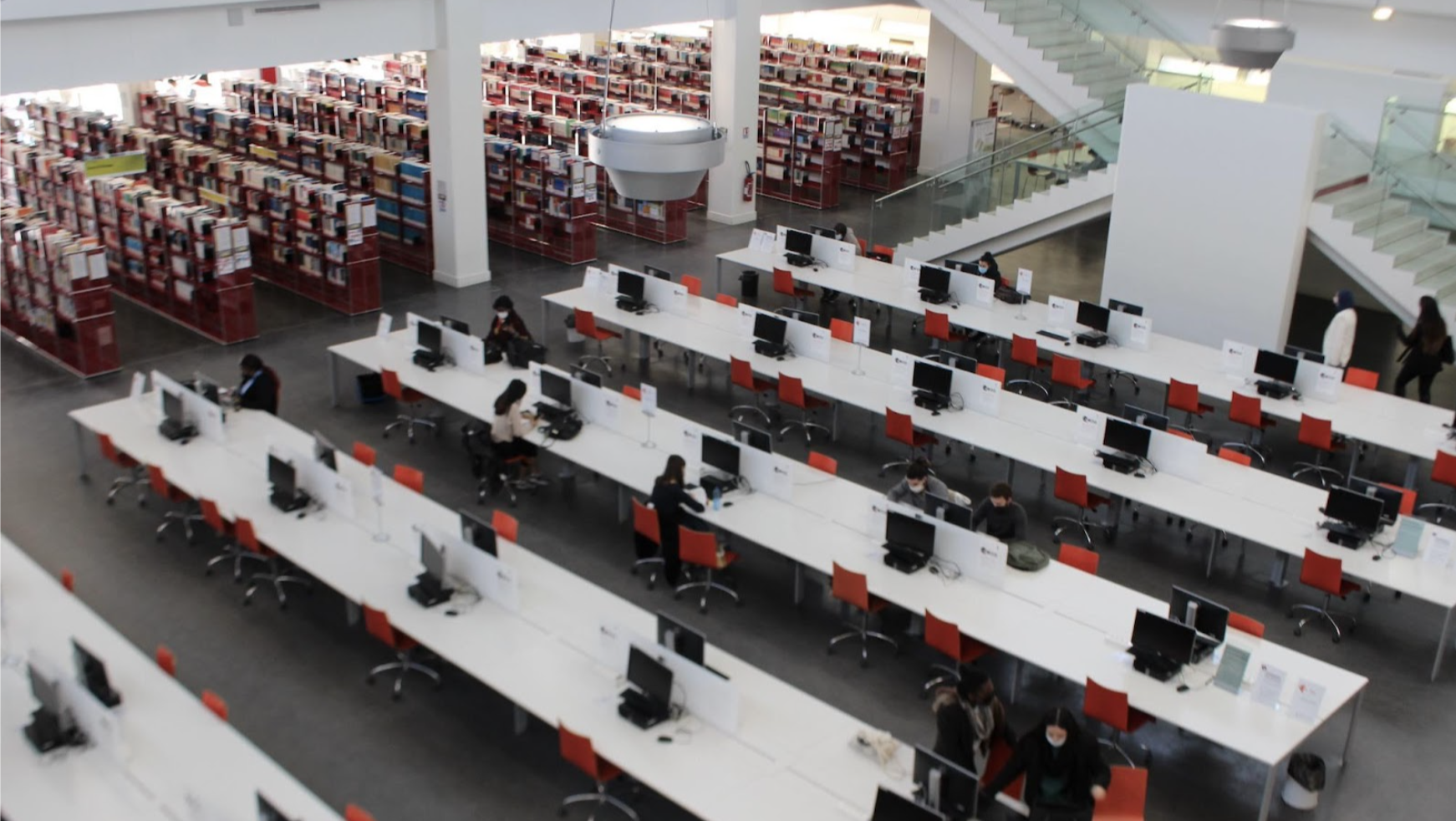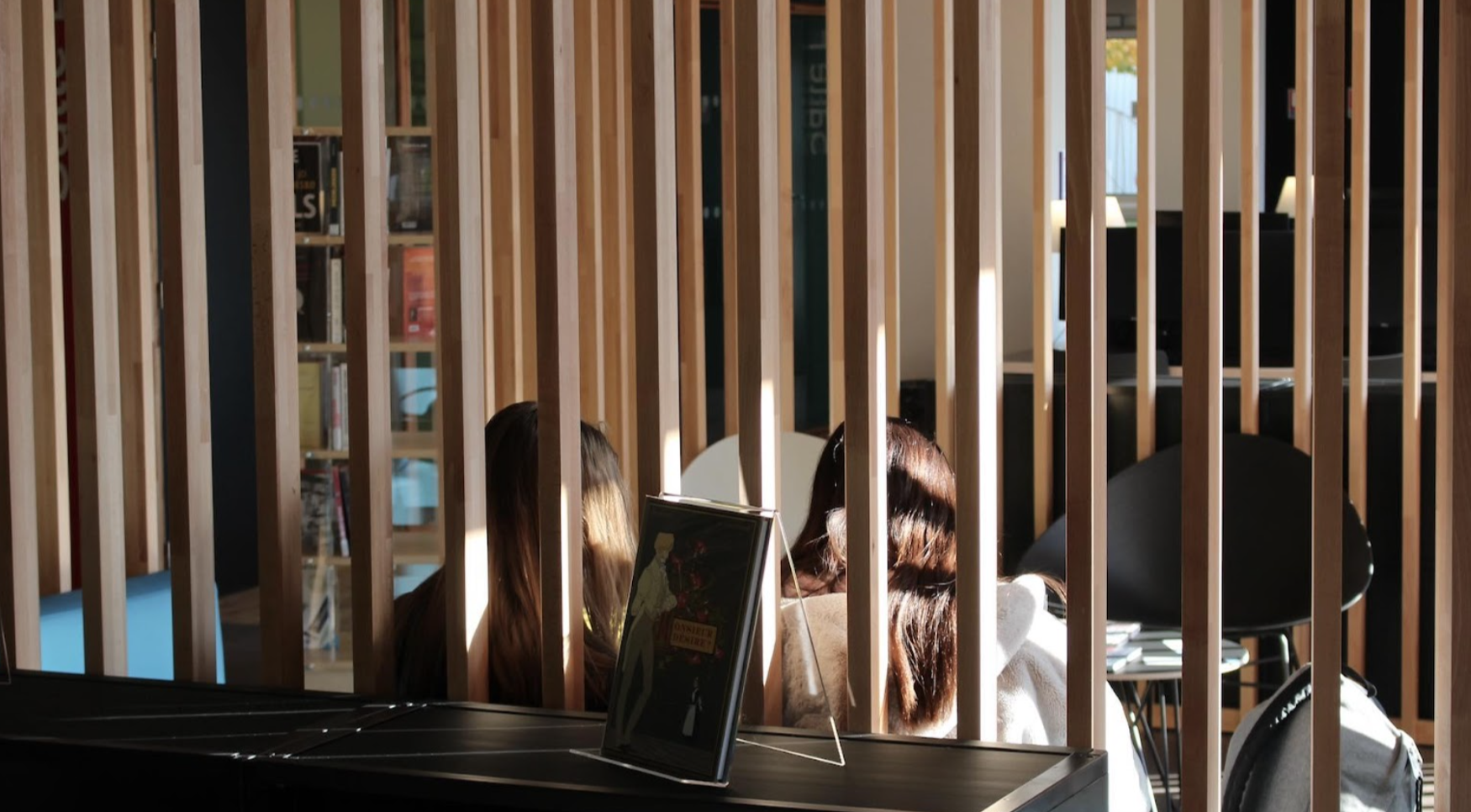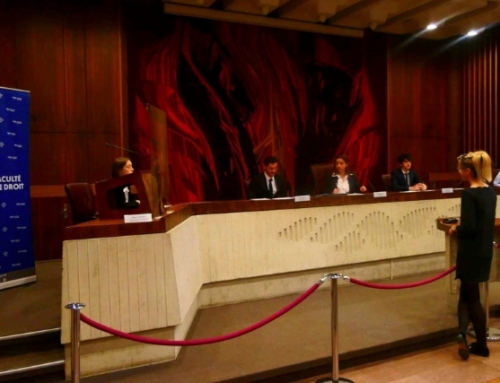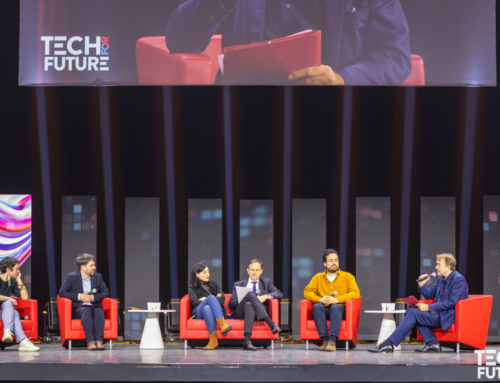The countryside is golden with morning sunshine as we arrive to visit the campus of the Université of Reims Champagne-Ardenne. It’s a lovely glow in the autumn sky, striking the metal edges of the modern buildings housing both the offices of the presidency and all the disciplines spread over different sites. A minibus is waiting for us. It will take us from science to the humanities, via the library, the sports fields and the University Institute Technology. Hills, views of the vineyards, crossing the arteries of the city lined with the great champagne houses, the scenery is reminiscent of the region’s heritage and diversity. The students are here too, and as everyone will tell us, it’s a pleasure to see them every day.
So our first question, addressed both to the management teams and to the teachers we’ll be meeting throughout the day, is about changes in usage and behavior after almost two years of health crisis. What new equipment and digital tools have made it possible to get through the periods of confinement and positively transform teaching methods ? Patrick Ravaux, delegated Vice-President in charge of pedagogical transformations, is here to guide us through all these different structures. Who better than him to take us on a tour of the campus?
Everywhere, students move around freely, respecting the barrier gestures. On every site, they seem happy to meet up and work together.
“These spaces are very popular with students, and we can see that as soon as we create third places, when we create rooms where they can work together on projects with somewhat specific equipment, we can see that these spaces are really, really used”, explains Patrick Ravaux during our visits.
“When we talk about co-modality for our best-equipped classrooms, we mean both face-to-face and distance learning. We now have co-working spaces in our buildings, where students can work with each other”, adds Thierry Letellier, delegated Vice-Chairman in charge of resources and heritage, to underline the efforts made to adapt our infrastructures.
Indeed, it is this transformation that is cited as the priority issue:
“The major challenges will obviously be to build on the achievements of the crisis period, so as to lead our students to success”. Damien Jouet, Vice-Chairman of the Training and University Life Commission.
And the students we interviewed largely share this point of view, since some of them only discovered the campus at the start of the 2021 academic year. Distance learning went well, but seeing professors again and listening to them in lecture halls or classrooms is a welcome return to normal. This is confirmed by Carine El Bekri, Director of the University Library: “which welcomes students from all three campuses, plus students from the health cluster who are doing their first year on this campus too, i.e. around 8,000 students.”

Nevertheless, digital uses have evolved rapidly and profoundly. Collaborative working, and access to and sharing of resources have developed. Digital links between different sites, including those further afield in Troyes, Charleville, Chaumont or Châlons-en-Champagne, for example, have been strengthened. Distances have been virtually abolished, enabling everyone to work with everyone else. This unprecedented performance underlines the dynamism and remarkable responsiveness of the University’s teams.
“We’ve been working on a regional project for a very high-speed network for the Grand-Est region, with 5 campuses involved. The aim, beyond increasing the power of the links, is really to provide the comfort of very high-speed digital broadband. For example, the link in Troyes will be upgraded to 40 Giga, giving us the same connection as between two university buildings here in Reims. And I’d like to emphasize that all the local authorities were involved in this project, both technically and financially”, explains Philippe Poplimont, delegated Vice President in charge of digital technology.
What do the teachers who have had to adapt to the changing uses of digital technology think ?
All of them told us that the remote courses had gone rather well, and that they would of course welcome a return to face-to-face teaching, even if, as Cédric Jacquard, senior lecturer in biology, points out, “face-to-face teaching with a mask has the disadvantage of making it more difficult to hear”. But as far as the tools that teachers have become accustomed to using are concerned, it should be remembered that everyone was already prepared before strict confinement was implemented. Training was provided for teachers and administrative staff in this respect. Today, we’re talking more about a hybrid model, meaning that Moodle, Google Doc or Zoom are now part of the university teaching landscape.
“The impact of digital technology is very strong, opening up unlimited possibilities,” says Philippe Poplimont. “We can deploy all the applications that researchers and teachers want to use, even if we tend to favor the tools that require the least bandwidth. We still have some very important digital projects, such as the development of a Data Center, and also the Demetere project, which we have just won through a national call for higher education digital demonstrator projects. It’s all about working on digital education from a regional development angle.”
The pedagogical practices of the teachers show that they have capitalized on the use of the new tools, developing a taste for them. “We have set up a support system for teachers to help them get to grips with these new teaching methods”, reassures Damien Jouet. “We need to put distance learning and face-to-face teaching together”, he concludes. On condition that students are also trained in the new digital practices. At least, that’s what the teachers we met on campus emphasize. After all, digital culture at a university is much more than mastering how to scroll through an Instagram feed or upload videos to Tik Tok. Quite often, some believe they are digital natives, when in reality they are merely consumers of content and purveyors of likes on social networks.

This is what motivated IT teacher Didier Baltazart to set up the PIX certification, dedicated to students and validating certain skills acquired with digital tools.
“PIX certification is a lifelong process, from high school, and sometimes even from junior high school, right through to the professional world. This national certification is based on a European reference system, and is designed to enhance the skills not just of our students, but of French society as a whole, in all areas of digital technology. This ranges from the production of digital documents, to data protection and even the correct postures to adopt when using digital terminals.”
The aim is to avoid placing students in a situation of failure, at a time when the hybridization of teaching has taken hold. Support is only possible if we have a detailed knowledge of the level of students when they arrive at university, and as they progress through their studies. Didier Baltazart explains: “When they reach Master’s level, or when they enter the job market, students will be asked to demonstrate a level of mastery of digital tools, which will be validated by a test controlled by the university.”
University of Reims Champagne-Ardenne teachers, students and administrative staff are now used to using all these tools, working on a virtual desktop, meeting via Zoom or Teams and sharing resources via Moodle. With all our teams having received the appropriate training, the fluidity of our pedagogy seems to be assured, and is well received.
And what about tomorrow ? How will the university experience evolve, given that interactions will be both virtual and face-to-face? The Université of Reims Champagne-Ardenne campus has already embraced new technologies. It is constantly innovating both in the deployment of resources and in the accessibility of knowledge and validation of skills. This strong agility can be felt at every level, and is a joy to experience. Let’s hope that this dynamism continues in the decades to come, to train future generations of talent in the region.
Retrouvez aussi le Campus Tour à l’Université de Reims Champagne-Ardenne en images :
Climb aboard Simone’s bus and discover the Campus Tour at the University of Bourgogne in Dijon!






